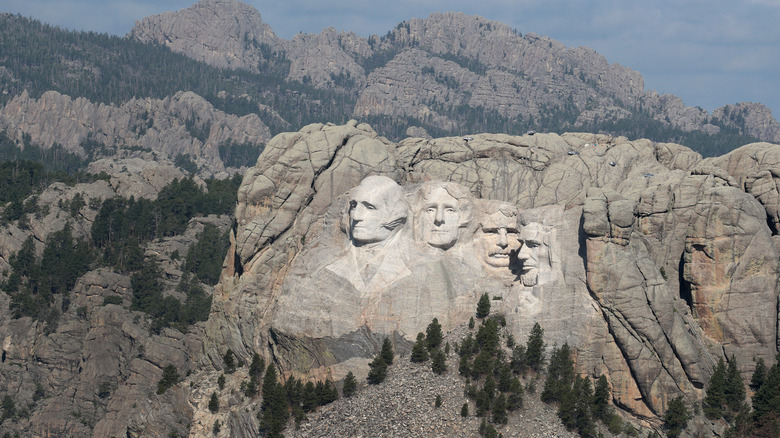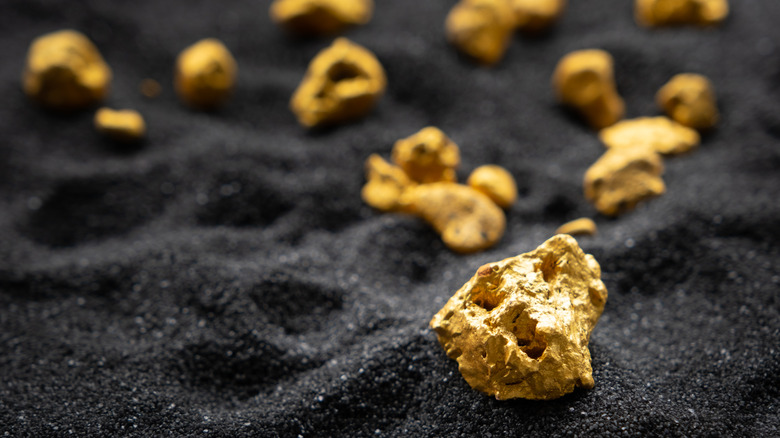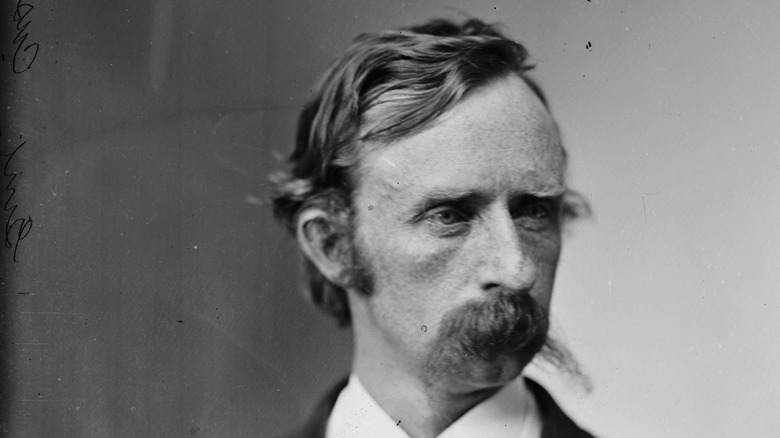The Surprising Thing Once Discovered In The Black Hills
In the western part of South Dakota lie the Black Hills, a mountain range covering an 8,400-square-mile area rising from the Great Plains and stretching as far as northeastern Wyoming (via Britannica). Within that vast expanse are some of the country's most breathtaking sights including, the Badlands, Devil's Tower, and, of course, Mount Rushmore (via Black Hills and Badlands). Among all these pristine natural wonders, a group of men led by General George Armstrong Custer discovered something far more immediately valuable to the country in 1874: Gold.
Populated by Native American tribes for nearly 10,000 years (via Legends of America), the Cheyenne, Crow, Kiowa, Pawnee, and Lakota Sioux tribes all called the area home at one time or another. In the early 1800s, expeditions to the area west of the United States began in earnest, most notably the Lewis and Clark expedition. Lasting from 1804 until 1806, the Lewis and Clark expedition explored the northwestern region of the Louisiana Purchase. A deal made by then-president Thomas Jefferson, the Louisiana Purchase added over 800,000 square miles to the United States including the area of South Dakota and the Black Hills (via Monticello).
There's gold in them there hills!
During the mid-1800s, the Lakota tribe lived and hunted on the grounds of the Black Hills. Part of the collection of tribes that comprise the Sioux nation, along with the Dakota and Nakota tribes (via Legends of America), the Lakota balked at the appearance of all the explorers entering their land from the United States. And while the U.S. "officially" owned the area, the Lakota tribe never recognized the Louisiana Purchase. After years of skirmishes between the US and the Lakota tribe, the government entered into a treaty with the Lakota. In 1868, the agreement created the Great Sioux Reservation that included the Black Hills (via Our Documents).
However, with rumors of gold being found within the Black Hills, the U.S. government still continued to explore the region. In 1874, General George Armstrong Custer and the 7th Calvary discovered gold in the French Creek located in South Dakota (via South Dakota Public Broadcasting). Setting up camp in the region, Custer and his men went about determining the amount of gold there. By the time Custer left the Hills a few weeks later, word had gotten around; gold had been found in the Black Hills. The gold rush had begun.
Custer's find
In 1876, a group of men discovered a gold vein near the town of Lead, South Dakota (via Gold Rush Nuggets). In less than two years' time, the men established the Homestead Mine. After warring with the Lakota tribe over the area for the next couple of years, another treaty was signed by both groups. In 1877, the United States took the Black Hills back from the Lakota tribe (via Legends of America).
In just a few short years, mining towns began popping up in the region. Overrun by gold prospectors, towns like Lead, Custer, and Deadwood began growing exponentially. According to Western Mining History, by 1880, approximately $7 million worth of gold had been mined from the region. Nearly 40 million ounces of gold have been pulled from the ground of the Homestead Mine since 1878, making it one of the most important gold discoveries in US history.


